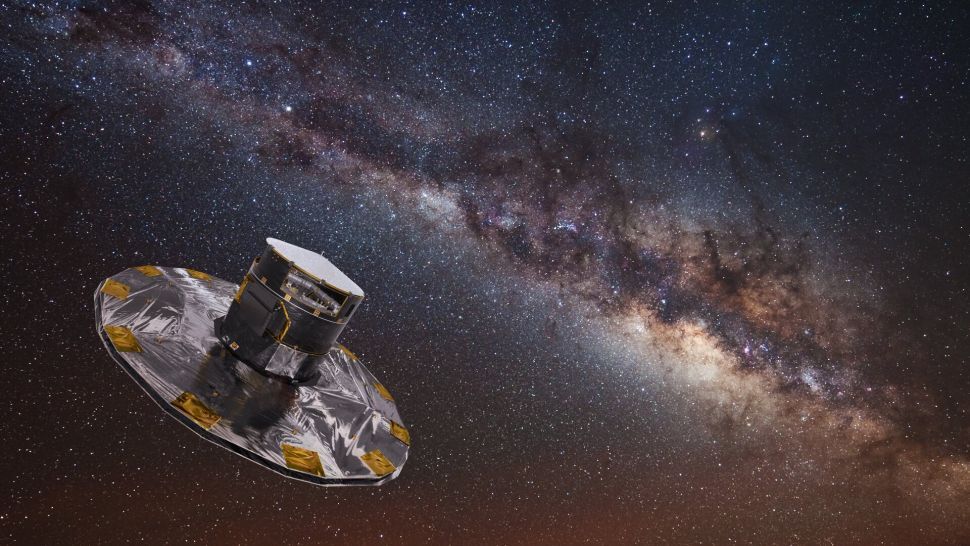21.01.2023
HD 206893 c is on the boundary between a planet and a brown dwarf, or "failed star."

Artist's illustration of Europe's star-mapping Gaia spacecraft, whose observations helped discover the huge alien planet HD 206893 c. (Image credit: ESA)
An international team of scientists has found a new exoplanet that's the first to be directly imaged thanks to Europe's Gaia spacecraft — and it appears to have nuclear fusion ongoing in its core.
The team, led by Professor Sasha Hinkley at the University of Exeter in England, discovered the exoplanet orbiting roughly 300 million miles (483 million kilometers) away from the star HD 206893, which is located about 130 light-years from Earth and is about 30% larger than our sun.
The star has a known debris disk around it and was considered a good candidate for finding new extrasolar planets. The European Space Agency's Gaia missionmakes extremely precise measurements of the location of stars as they move across the sky, and the astrometric data it provides also means the presence of exoplanets can be inferred by measuring the wobble of stars.
Following up on Gaia data, the team used the GRAVITY instrument on the Very Large Telescope in the Atacama Desert of northern Chile to directly confirm the presence of the newfound planet, known as HD 206893 c.
What's more, the observation also allowed the researchers to analyze the light spectrum from the planet's atmosphere. The apparent brightening of the object suggests that the core of this giant planet is undergoing nuclear fusion using deuterium, an isotope of hydrogen carrying a neutron.
The newly discovered exoplanet is likely about 13 times more massive than Jupiter. That enormous size and the evidence of fusion mean it is on the boundary between being a planet and a brown dwarf, a curious cosmic object that forms in the same way as normal stars but does not quite have the mass required to sustain nuclear fusion. The discovery could provide new insight for scientists to distinguish between massive planets and brown dwarfs, study team members said.
"The discovery of HD 206893 c is a really important moment for the study of exoplanets, as ours may be the first direct detection of a 'Gaia exoplanet,'" Hinkley said in a statement(opens in new tab).
The discovery shows that Gaia can point the way to potential exoplanets, which can then be directly detected by follow up observations, either on the ground or by a space-based observatory such as NASA's James Webb Space Telescope.
The new study has been accepted by the journal Astronomy & Astrophysics and is available via ArXiv(opens in new tab). In addition, Hinkley presented the discovery earlier this month at the American Astronomical Society conference in Seattle.
Quelle: SC
